Orbital Sciences’ Antares rocket explodes violently and is consumed in a gigantic aerial fireball seconds after blastoff from NASA’s Wallops Flight Facility, VA, on Oct. 28, 2014, at 6:22 p.m. Credit: Ken Kremer – kenkremer.com
Story updated with link to Ken Kremer interview with NBC Nightly News[/caption]
NASA WALLOPS FLIGHT FACILITY, VA – The first night launch of Orbital Sciences’ commercial Antares rocket suddenly ended in total calamity some 10 seconds or so after liftoff when the base of the first stage exploded without warning over the launch pad at NASA’s Wallops Flight Facility, Va, at 6:22 p.m. EDT on Tuesday, October 28.
Watch the Antares launch disaster unfold into a raging inferno in this dramatic sequence of my photos shot on site.Check out my raw video of the launch – here. Read my first hand account- here.
I was interviewed by NBC News and you can watch the entire story and see my Antares explosion photos featured at NBC Nightly News on Oct. 29 here.
I was an eyewitness to the awful devastation suffered by the Orb-3 mission from the press viewing site at NASA Wallops located at a distance of about 1.8 miles away with a completely clear view to the launch complex.
A prime suspect in the disaster could be the pair Soviet-era built and US modified AJ26 engines that power the rocket’s first stage.
Another AJ26 engine failed and exploded during acceptance testing on May 22, 2014 at NASA’s Stennis Space Center in Mississippi. An extensive analysis and recheck by Orbital Scoences was conducted to clear this pair for flight.
See my exclusive photo of the AJ-26 engines below and a follow up story shortly.
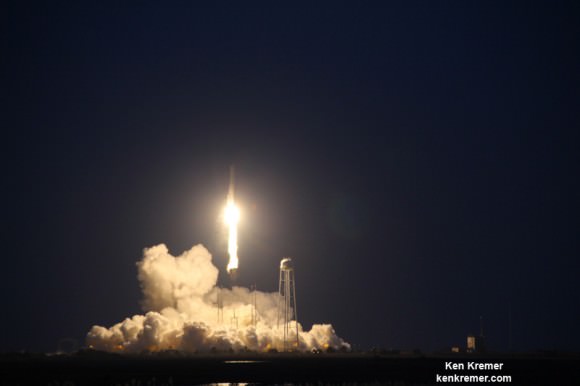
It was a picture perfect evening.
Blastoff of the 14 story Antares rocket took place from the beachside Launch Pad 0A at the Mid-Atlantic Regional Spaceport (MARS) at NASA Wallops situated on the eastern shore of Virginia.
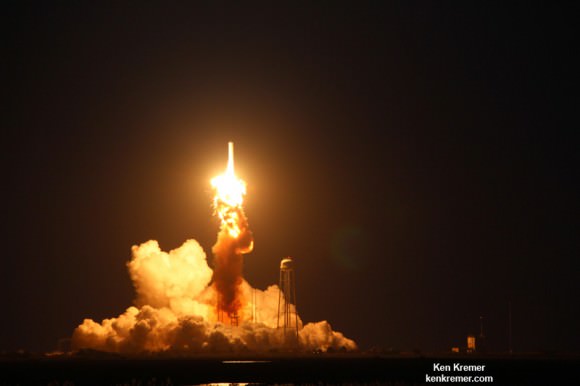
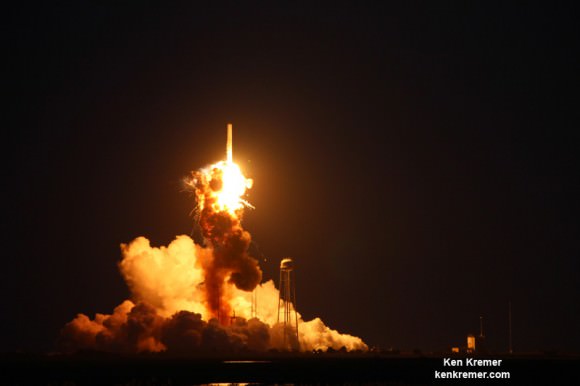
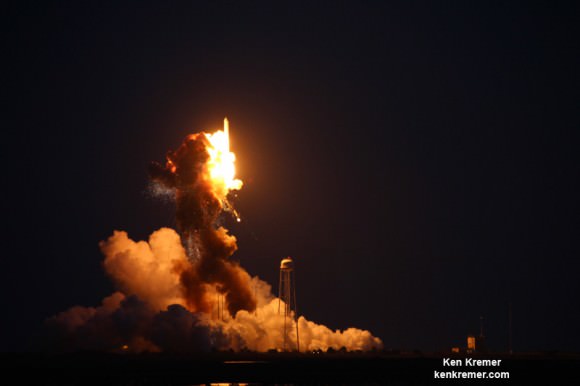

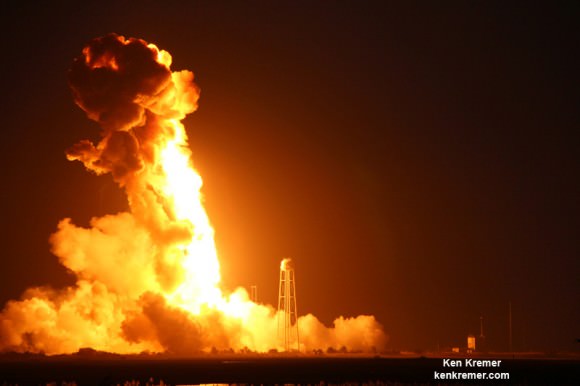
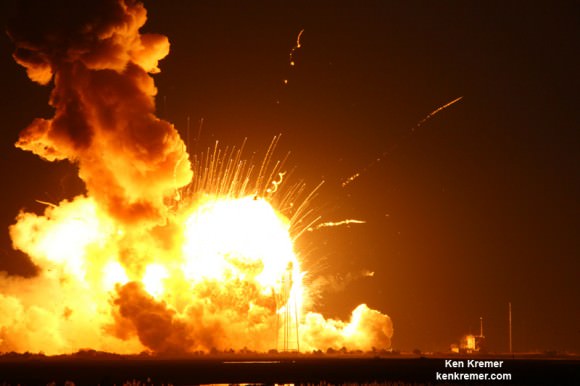
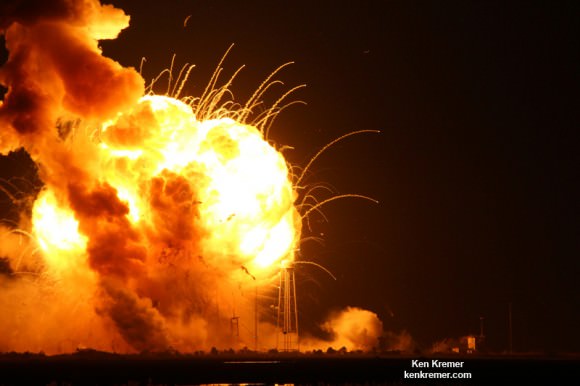
The highly anticipated 1st night launch of Antares would have wowed tens of millions of spectators up and down the eastern seaboard from South Carolina to Maine. Overall it was the 5th Antares launch.
The doomed Orb-3 mission was bound for the International Space Station (ISS) on a flight to bring up some 5000 pounds of (2200 kg) of science experiments, research instruments, crew provisions, spare parts, spacewalk and computer equipment and gear on a critical resupply mission in the Cygnus resupply flight dubbed Orb-3 bound for the International Space Station (ISS).
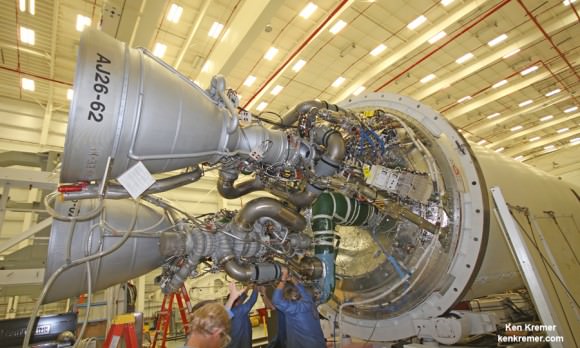
The investigation into the launch failure will be led by Orbital Sciences.
“The root cause will be determined and corrective actions taken,” Frank Culbertson, Orbital’s Executive Vice President and General Manager of its Advanced Programs Group, said at a post launch briefing.
Watch here for Ken’s onsite reporting direct from NASA Wallops.
Stay tuned here for Ken’s continuing Earth and Planetary science and human spaceflight news.

